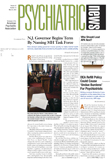Today's physicians are always on the go, making pagers and mobile phones a necessity for staying in touch while out of the office. Unfortunately, these devices do not give access to the range of features found on a computer. While a notebook computer is certainly one option for mobile information access, there are other innovative choices today.
The first portable computer was the Osborne, developed in 1981. It was small enough to fit under an airplane seat, but at 26 pounds it was not exactly svelte. The Toshiba T1100 is recognized as one of the first notebook computers, weighing in at 10 pounds. Manufacturers such as Psion and Casio took a different approach in the 1980s. Instead of developing a portable computer, they created handheld devices—known as personal digital assistants—that could store basic information such as addresses and a calendar.
The Apple Newton Messagepad, released in 1993, is widely regarded as the first truly portable computing device. It was programmable and featured connectivity with a modem and other peripherals; however, its large size and poor handwriting recognition kept it from becoming a mainstream device. The Palm Pilot, released in 1996, is credited with creating demand in the portable computing market due to its small size and intuitive interface.
Today, with its shrinking size and increasing capabilities, mobile computing is no longer limited to notebook computers and personal digital assistants. Integration with cellular phones and even wristwatches has created a plethora of devices from which to choose for your information needs.
What's Right for You?
Without doing your homework first, it is almost impossible to walk into a store that sells electronic devices and emerge with the one that is right for your needs. Before you begin to shop, consider the following questions:
•
What exactly are my information needs? Do I need a device with only basic features such as an address book, calendar, and a to-do list, or do I need more computing power with a word processor and memory capacity to handle medical textbooks?
•
What type of connectivity will I need? Do I need to be able to synchronize information from this device with a desktop computer? Will I need e-mail and Internet-browsing capability? Do I need to exchange information with others using similar devices?
•
Am I willing to carry more than one device for my computing and communication needs? Do I want the “best of breed” or am I willing to settle for a “jack of all trades”?
•
Where will I use this device? Will it be transported for use in one location such as an office, or will it be used on the go, such as on a hospital floor or while traveling?
Once you've answered these questions, you will be able to narrow your choices. Read the descriptions of the following devices and find the best match.
Personal Digital Assistants
The personal digital assistant (PDA) has developed into a powerful information tool. There are two types of PDAs based on operating system: the Palm operating system and Windows Mobile (formerly known as PocketPC). All PDAs handle basic personal information management (PIM) functions, such as a calendar, to-do list, address book, and notes. They synchronize with a desktop computer PIM such as Microsoft Outlook or Lotus Notes, enabling you to have your information at the office and on the road.
The advantage of a PDA is that there is a wide variety of medical textbooks and tools available for it, such as DSM-IV and the publication you are now reading. Some PDAs even offer Internet connectivity with Web browsing and e-mail by use of the wireless Internet, commonly known as Wi-Fi. With additional hardware, your PDA can be used to run PowerPoint slide shows.
Hybrid devices that offer cellular phone service are sometimes confused with PDAs. Smartphones are small devices that offer both cellular phone and PDA services. However, Smartphones are very limited in terms of their PDA capabilities because of their small screen size and limited memory. They cannot accommodate regular PDA software such as drug references, and they require specific Smartphone-designed software available at sites such as<www.smartphone.net>.
In contrast, the Palm OS Treo and Pocket PC phones are more PDA than phone. These devices have larger screens and more memory and hardware options, just like their traditional PDA brethren. With the purchase of additional wireless data service, you can use these devices to check e-mail and browse the Internet anywhere.
Portable Computers
Notebook computers have almost replaced desktop computers as the most popular computing devices. These computers come in a variety of sizes, ranging from desktop replacements weighing 10 pounds with 15-inch screens to mobile warriors weighing 3 pounds with 12-inch screens. Manufacturers continue to innovate, offering built-in wireless Internet connectivity and increasing memory and hard-disk capacity.
The Tablet PC7 has become quite popular in recent years for its innovative design and software features. It offers the advantage of a touch screen activated by a specialized pen. Tablet PCs include handwriting recognition, making it handy for taking notes that can be integrated into Microsoft's Office programs. Tablet PCs come in two styles, slate and convertible. The slate is just a touch-screen monitor and requires a separate keyboard. The convertible transforms from a traditional notebook shape into a slate by flipping over the screen.
What's Next?
The future of mobile computing is actually here today. Manufacturers such as the OQO and FlipStartPC have created full-fledged computers in the size of a PDA. These new devices have small screens, but offer full desktop computing power. I'll cover the strengths and weaknesses of each of these devices in more detail in the next column. ▪

